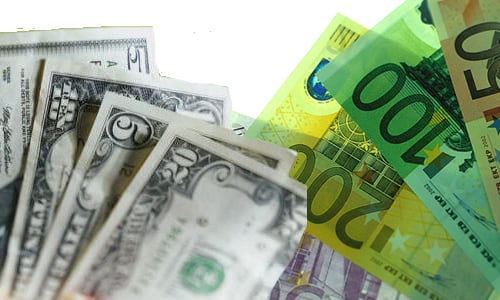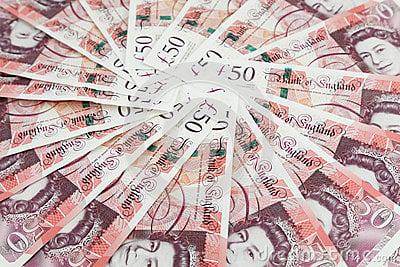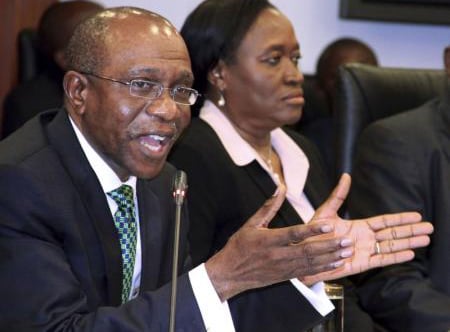The year has started on a volatility rollercoaster with a background of lower oil prices and surprise central bank decisions that have affected most major currency pairs. The Euro fell an astonishing six percent against the USD in January, falling from 1.2069 at the beginning of the month, to 1.1096 by the end of the month.
The majority of the losses happened on January 15th, followed by a comet tail in the last two weeks of the month; the catalytic event being the Swiss National Bank’s (SNB) unexpected decision to cut the Euro loose and end the minimum exchange rate of 1.20 CHF to the Euro. The EU’s deflation woes on weaker oil prices, and stronger economic data out of the United States led to speculation that the currency pair might even see parity in the first quarter of 2015.
Chief market analyst of FXTM, Jameel Ahmad, comments: “The unexpected shock from the SNB to discontinue its minimum exchange rate to the Euro was seen as providing a very clear indication to traders that the longer-term forecasts for the Euro remained extremely bearish. There is a great deal of speculation regarding the EURUSD reaching 1:1 during this year and although this remains possible in the longer-term, it was the decision from the SNB to discontinue its minimum exchange rate that put the accelerator on the EURUSD decline. Traders rushed to price in EURUSD losses, with the pair seen tumbling from 1.1791 to 1.1096 in just over a week.”
With the CHF taking centre stage in the past few weeks, let’s take a look at the performance of the USDCHF, which fell by 6.8 percent throughout January, as the Swiss Franc surged during the SNB market crisis. Not even USD strength could stand against the much-stronger demand for the CHF during the middle of the month, but this tailed off towards the latter half of January.
Advertisement
In more reversals of fortune, the AUDUSD fell by 5.1 percent throughout the first trading month of the year, partly on USD strength and partly on concerns over Australia’s economic growth encountering a slowdown. The Australian economy is heavily reliant on its mining sector, and the complete unexpected slump in the price of commodities has contributed to extra anxiety over Australian economic growth prospects and encouraged the Reserve Bank of Australia to cut interest rates from 2.5% to a new record-low of 2.25% in the early hours of February 3rd.
“The RBA have been warning for nearly a year that the Aussie has been overvalued, alongside its economy being set to enter an unexpected period of weaker economic growth. It has only been during the past five months that the Aussie has commenced its decline from 0.93 to 0.77 in late January, with many expecting further weakness following the dramatic decline in commodity prices. The Australian economy was already at risk to reduced growth in its mining sector (key GDP contributor) with limited progress also being noticed in domestic sectors, such as retail sales and construction output. A combination of limited progress being noted with regards to domestic growth and the collapse in commodity prices inspired the RBA to cut interest rates,” says Mr. Ahmad.
The GBPUSD fell by 3 percent, as the United States’ economic growth veers into the fast lane comparatively speaking. The US Federal Reserve may not have increased interest rates so far this year, but at least they’re talking about it for later on in 2015. By comparison, the Bank of England is sending bearish signals with its hesitation to move ahead with stronger rates, and a deflationary trend starting to be noticed in the UK economy.
Advertisement
“There is a negative sentiment clouding the GBPUSD at present, with this resulting in a real lack of attraction towards the Pound. The complete tumble in the price of oil has led to the UK economy facing a period of unexpected deflation risks and with the price of oil continuing to decline since the previous inflation data, investors are concerned UK inflation will weaken further over the next few months. The unexpected period of disinflation has also led to optimism that the Bank of England (BoE) might raise UK interest rates this year being completely eliminated. Not only is unexpected disinflation a concern, but alongside a general election in just under four months, potential buyers have become hesitant from entering positions. With the general consensus being that disinflation risks are going to strengthen and a key UK election on the horizon, the GBPUSD will likely continue trading in the same small range found in January, albeit with a slight downside bias.
The USDCAD saw gains of 9.5 percent during the month of January, as Canada is an oil-exporting country that is very likely to see its GDP impacted by much-lower oil prices, which have fallen by over 50 percent since the beginning of December 2014.
Last but not least, the USDJPY saw losses of 2.6 percent for the month of January, mainly on more demand for the JPY amid volatility in the EUR and CHF markets.
Advertisement
Add a comment






